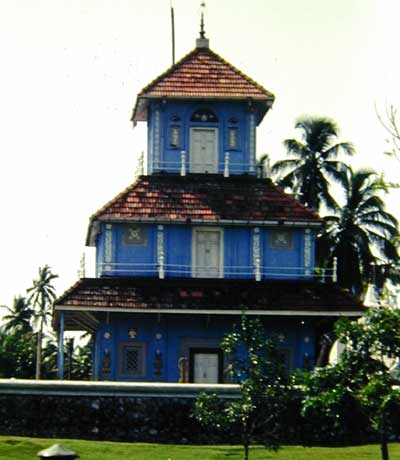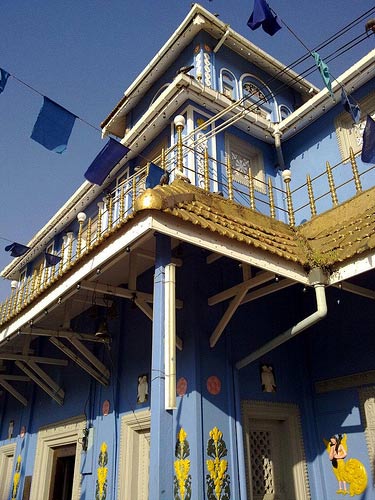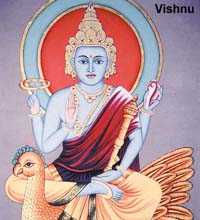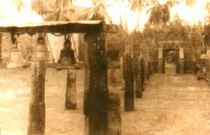|
| |||||||||||
Home > Sacred Sites of Lanka > Dondra
|
 |
The present Upulvan Devale, Devinuwara (Dondra) dedicated to Lord Vishnu |
 |
Prof. S. Pathmanathan of Peradeniya University in his lecture on 'Temples of Devinuvara at the Ramakrishna Mission Hall, Wellawatte Saturday said that King Dappula I built the Upulvan Devala and the Buddhist shrine Kehireli Vihara. Parakramabahu II became the leading patron of both shrines the Upulvan Devala and the Kehireli Vihara. During his reign Devinuvara was a flourishing port and a trade centre, with the port being administered by Maha Pandita, the Chief Customs Official. Parakramabahu I, Nissankamalla and the several kings that followed and other royal personages patronised both Hindu and Buddhist shrines there.
In addition to the Upulvan Devala which was said to be the abode of a Buddhist god there were the Hindu Kovils like Ganesha Kovila, Nagarisa Kovila and later the Kataragama Kovila and Pattini Kovila. The kings treated the Buddhist and Hindu shrines with parity.
Inscriptions set up at Naimana and in the city of Devinuvara by Prakramabahu VI indicate the Buddhist and Hindu connections. So was the inscription by Vijayabahu VI. There was always religious amity attached to Devinuvara. Devinuvara was responsible for setting up the Aluthnuvara Devala in the Kegalle District in the reign of Parakramabahu IV.
Even trade in the city of Devinuvara and its port was carried out by the Sinhalese, Tamils, Muslims, Arabs and other communities.

|
| Maha Vishnu |

|
| Devi Nuwara temple remains |
Of course the Tissara, Mayura, Parevi and Kokila Sandesas treat Upulvan as a Buddhist god. Perakumbasirita too gives the same impression. After the Portuguese devastation (ca. 1588) the new shrine that had come up was the abode of the Hindu god Vishnu. However there is a debate about the meaning of Upulvan or Utpalavarna.
Even in Polonnaruwa and other capitals there were Buddhist shrines side by side with Hindu shrines. Hence it is clear that the kings did not discriminate against the Hindu religion. What has to be learnt from the Devinuvara experience is that there had been religious tolerance and amity in the royalty and the people as well. Mr. P. P. Devaraja MP for Colombo presided.
"Ports in ancient Sri Lanka"
by Prof. W. I. Siriweera Vice Chancellor, Rajarata University
This article first appeared in The Island (Colombo).
Dondra was another important commercial port in the south in the thirteenth, fourteenth and fifteenth centuries. The Dondra inscription of Parakramabahu II (1236-70) contains regulations to prevent evasion of customs duties at the port of Dondra by traders.
According to this epigraphs the sea port of Devinuvara or Tendiratota was administered by an officer titled Mahapandita. Customs duties were imposed by Mahapandita and merchants were safeguarded from illegal imposts. Those coming from foreign countries were not allowed to set up places of business without permission and royal officials were required not to accept gifts from foreign merchants.
Parevi and Hamsa Sandesas also refer to Dondra as a flourishing trade centre in the fifteenth century. The Galle Trilingual slab inscription informs us that the Chinese emperor sent various kinds of offerings through his envoys including gold, silver silks and sandalwood to the temple at Dondra which was probably constructed by a princeling of southern Sri Lanka in the seventh century A.D. and was dedicated to Varuna the guardian god of the sea.
The following news item appeared in the London weekly journal News Lanka, of 5th November 1998:
Tondeshwaram Nandi unearthed in November 1998 at Dondra Head.
Shiva Linga found at Devinuwara.
Shiva Linga found at Devinuwara.
A sculptured 'Shiva Linga' was found in the foreground of Othpilima Vihara in the historical Vichitrama Viharaya in Devinuwara.
"A person who was weeding the temple garden traced the sculpture. The 'Shiva Linga' is 4 ft in height and 2 1/2 feet in width. At an earlier occasion too a similar sculpture was found at the same premises. It is believed that these findings give a clue as to existence of a 'Shiva Devalas at the premises in the past."
As Hindu Temples have not been known to have functioned in that region in recent years, the unearthed Shiva linga murti may obviously be a deity from one of the Tondeshwaram Temples. As the Lingam is said to be comparatively large in size, it could even be the principal Murthi of the ancient temple.
What have been unearthed are extremely interesting. The "avudaiyar" or the pedestal of the Shiva lingam appears to be a thin slab; the upright or vertical portion is tall and slender. The "Nandi" ishapam appears to be of coarse finish, showing lack of suitable implements. These can therefore said to be of very ancient origin, probably of about the Pallava era. If this Shiva linga murti, now unearthed, was indeed from the ancient Tondeshwaram Temples then the event is a revelation, a major revelation! Shruti Laya Sangam of Great Britain has managed to acquire the photograph of this lingam and is the first institute to publish it in 500 years.
| Living Heritage Trust ©2021 All Rights Reserved |